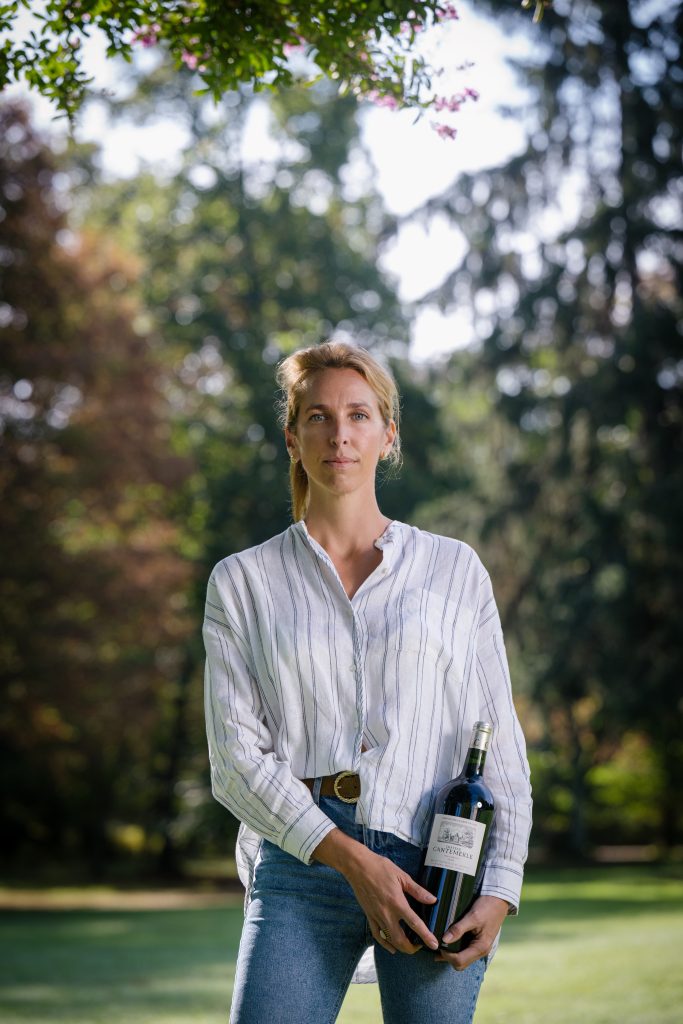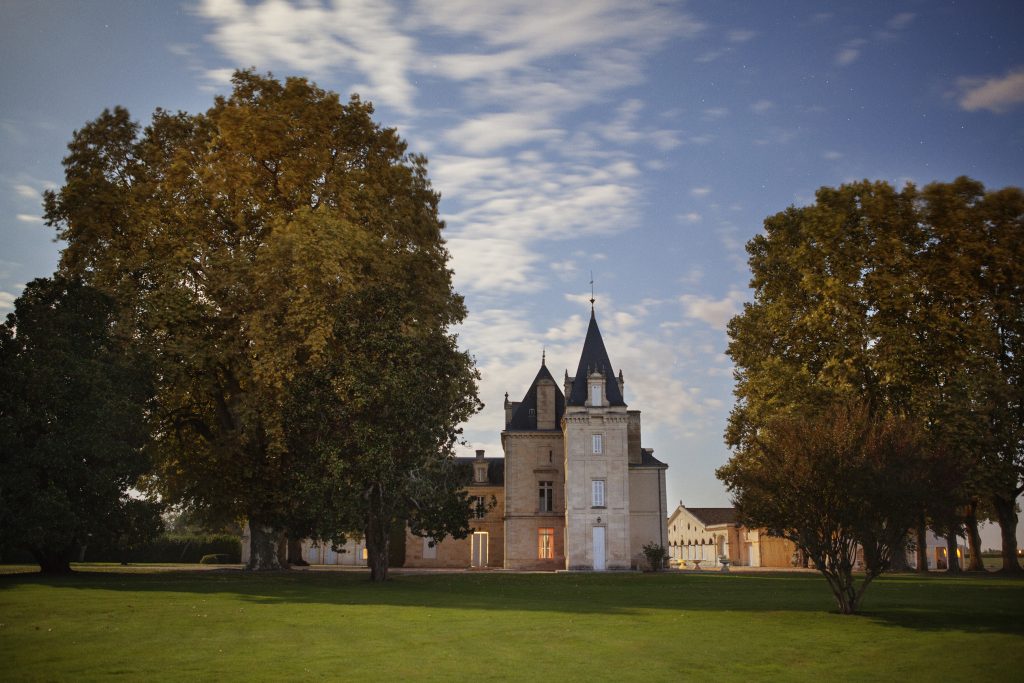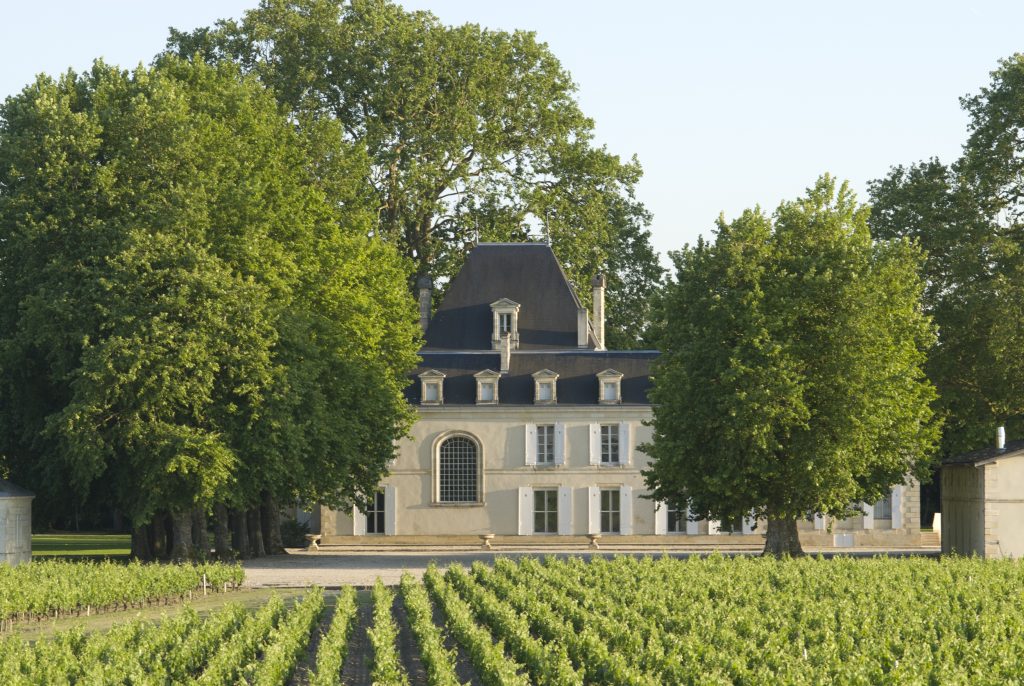Ce site web utilise des cookies afin de vous offrir la meilleure expérience utilisateur possible. Les informations contenues dans les cookies sont stockées dans votre navigateur et remplissent des fonctions telles que vous reconnaître lorsque vous revenez sur notre site web et aider notre équipe à comprendre quelles sont les sections du site web que vous trouvez les plus intéressantes et les plus utiles.
Château Cantemerle : « le 2023 est une bonne indication de la direction que prend le domaine »
Le Château Cantemerle a longtemps été associé à des vins de Bordeaux de grande valeur, mais sa nouvelle directrice générale, Laure Canu, souhaite que le domaine soit connu pour sa qualité, plutôt que pour ses prix – et un nouvel investissement majeur dans la qualité jouera un rôle clé à cet égard. Arabella Mileham s’est entretenue avec elle pour en savoir plus.

Arrivée au Château Cantemerle après avoir été pendant cinq ans directrice générale adjointe du Château Angélus en 2021, c'est sans surprise que Laure Canu, juriste de formation à Paris avant d'obtenir un master spécialisé dans le management des vins et spiritueux, apporte ses idées pour faire bouger les choses dans ce château du Haut Médoc, cinquième cru. L'une des plus anciennes propriétés de Bordeaux, dont l'histoire remonte au 12ème siècle.
L’année dernière, Colin Hay’s a donné au château une critique élogieuse du millésime 2022, promettant que c’était le début des choses à venir. Et Canu est clairement d’accord. Le millésime 2022 a vu un pas en avant en termes de qualité, avec un millésime exceptionnel – et elle affirme que le millésime 2023 est susceptible de montrer la direction du voyage pour le domaine.
« Nous sommes très fiers de la qualité du 2023 – ce n’est pas un grand pas en avant par rapport au 2022, qui était si exceptionnel, mais le 2023 ressemble plus à ce que nous voulons produire. C’est une bonne indication de la direction que prend le domaine.
Son objectif déclaré - faire en sorte que la réputation de Cantemerle soit moins liée au bon rapport qualité-prix des vins et davantage à leur qualité incontestable - est quelque chose qui, elle l'admet, pourrait prendre "beaucoup de temps". Cependant, en plus de ses nombreux voyages, Mme Canu a récemment engagé un directeur commercial, Pierre-Alexandre Gazaille, pour renforcer la capacité de l'équipe à développer ses marchés et à parler aux clients en Europe et dans le monde entier. Les États-Unis, par exemple, sont un marché cible clé où la société réalise actuellement moins de 10 % de son chiffre d'affaires, "mais pour un marché aussi important, je pense que nous pourrions faire mieux", note Mme Canu. "Nous devons veiller à mieux équilibrer la distribution.
« Il y a quelque chose de convivial chez Cantemerle – vous recevez un accueil chaleureux car ils connaissent la marque et vous pouvez ouvrir une bouteille pour la boire, elle est accessible, vous pouvez l’ouvrir jeune ou la garder pendant des lustres », explique-t-elle. « Cependant, il est très important de se rendre compte de la qualité des vins, du terroir et du travail que cela implique, afin qu’ils ne pensent pas seulement au prix », a-t-elle déclaré.
De plus, l’équipe a « un excellent partenariat avec les négociants ». « Nous avons la chance d’avoir un commercial avec le négociant qui a envie de nous aider dans ce projet, qui croit au vin et en nous », a-t-elle déclaré. « Il est important de parler de la qualité avant le prix. »
Les projets de M. Canu se concrétisent par un "investissement massif" et un projet de rénovation entrepris par le propriétaire de Cantemarle, le groupe d'assurance français SMABTP, qui a racheté le château à la famille Dubos en 1981. Ce projet de deux ans prévoit la restauration du château et de l'orangerie duXVIIIe siècle, afin d'offrir un meilleur hébergement aux visiteurs et aux hôtes, ainsi qu'une grande salle de dégustation et une boutique. Le fait de pouvoir accueillir les gens dans le domaine rénové, avec ses nouvelles salles de dégustation, contribuera à souligner cet aspect, note-t-elle.
Cependant, la plus grande opportunité de renforcer la qualité du vin se présentera sous la forme du nouveau cuvier, qui triplera le nombre de barriques de toutes tailles et introduira un système d’alimentation par gravité, avec un chai à barriques souterrain.

Ce nouvel investissement dans le château et les installations de vinification vient s’ajouter aux investissements précédents de SMABTP dans le vignoble qui a été replanté et remodelé et ajouté dans les années 1980/90.
« Il n’y avait que 20 ha de vignes, donc les vignes étaient en très mauvais état », explique Laure Canu. De ce fait, le vignoble a été replanté et « rééquilibré » en termes d’encépagement avec des Merlot et des Cabernet Francs réduits au profit du Cabernet Sauvignon.
« Quand ils ont acheté le Château Cantemerle, il y avait 36 % de cabernet sauvignon, aujourd’hui c’est 67 %, donc c’est un changement massif. »
« Ils ont beaucoup investi dans le vignoble il y a quarante ans, et maintenant nous avons un vignoble qui est en très bon état, avec des vignes très saines, mais c’était frustrant d’avoir l’installation technique qui datait des années 1990, avec de grandes cuves, car nous ne pouvions pas travailler avec précision ».
Le premier objectif de la rénovation était le nouveau cuvier technique, qui devrait être prêt à l’été 2025. Cette nouvelle salle disposera de 120 nouvelles cuves, soit trois fois plus que dans l’ancienne salle, dont la taille varie de 35 à 170 hl.
« Cette gamme plus large nous permettra de travailler avec une plus grande précision grâce à l’alimentation par gravité de la récolte à l’élevage, car nous disposerons d’un chai à barriques souterrain », a-t-elle déclaré.
La différence que cela fera sera énorme, explique Canu. « C’est un grand pas en avant pour la qualité des vins. Le Château Cantemerle a toujours été très cohérent – les millésimes classiques comme le '17 ou le '13 ont toujours été très bons en raison du terroir – et nous garderons le style, l’élégance caractéristique de Cantemerle et la fraîcheur du vin, mais nous essaierons d’ajouter de la chair et de la complexité, le milieu de bouche sera plus précis, ainsi que la qualité des tanins.

Cela permettra également à l’équipe d’améliorer sa connaissance des vignes et des parcelles, a-t-elle ajouté, et donc d’être plus sélective sur les meilleures parties du vignoble. « Comme vous ne connaissiez pas la qualité intra-parcelle, chaque partie du vignoble, et ce sera beaucoup plus important qu’aujourd’hui. »
Bien que la cave ne soit pas terminée avant 2025, l’équipe a déjà commencé à apporter ces changements dans une cave temporaire, une zone à température contrôlée qui était autrefois utilisée pour le stockage. Il a également déjà eu certaines des nouvelles cuves en acier inoxydable, remplaçant certaines des anciennes fûts en bois - à l’avenir, ils n’utiliseront que de l’acier inoxydable, ajoute Canu.
« Nous avons commencé le travail d’amélioration de la qualité des vins l’année dernière. Nous avons beaucoup plus de sélection – nous produisions 70 % du grand vin et 30 % de la deuxième étiquette, mais à partir de 2022, nous décidons de ne produire que 60 % du grand vin, afin de pouvoir nous concentrer sur le cœur du vignoble et les plus vieilles vignes, en particulier le cabernet sauvignon.
Cette sélection a été très efficace, note-t-elle – et la qualité du 2022 s’est tellement démarquée que l’équipe a décidé d’avoir « au moins » 70 % de cabernet sauvignon dans l’assemblage final chaque année afin d’avoir la signature du cabernet sauvignon et « le terroir graveleux » (avant c’était un peu plus ad hoc, selon les millésimes, explique-t-elle)
L’équipe a également réduit son élevage en fûts de chêne, avec de moins en moins de fûts neufs utilisés « pour se concentrer sur le terroir », explique Canu. « La période d’élevage est de toute façon courte, seulement 12 mois, et il y avait 40 % de fûts neufs. En 2022 et 2023, il n’était que de 35 %, mais nous expérimentons et essayons actuellement différents pourcentages.

